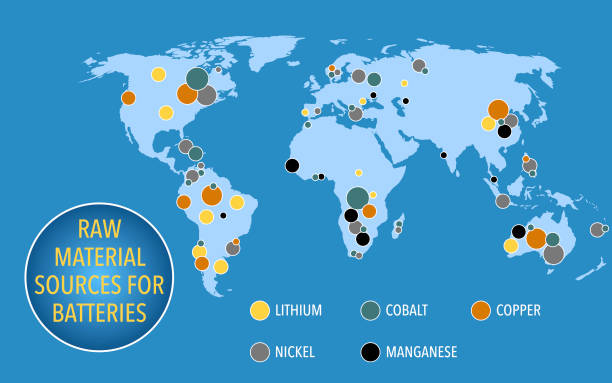Will battery minerals demand outstrip supply in the future?

By Ellsworth Dickson
With research firm IHS Markit noting that electric vehicle (EV) sales accounted for only 1.8% of the automobile market last year and is forecasting that more than 10% of vehicle sales will be EVs by 2025, one could say that the electric vehicle revolution is underway.
Leaving aside technical issues such as range anxiety, power sapping cold climates and necessary air conditioning in hot climates, apartments lacking charging stations, range-cutting boat and camper trailers plus the high cost of many EVs, we will focus on getting battery minerals to market.
This switch to EVs is an important part of the goal of the International Energy Agency’s Paris Agreement to achieve net-zero carbon emissions by 2050 in their report The Role of Critical Minerals in Clean Energy Transitions. This is a worthy goal; however, it won’t be smooth sailing.
For example, what are the implications of critical battery minerals producing nations being concentrated in so few countries; namely, the Democratic Republic of Congo (DRC) with 70% of global cobalt, China with 90% of REEs and 50-70% of lithium, Indonesia and Philippines with 45% of nickel, Chile and Peru with 40% of copper, and South Africa with 70% of platinum production? Does this mean that the supply chain of critical minerals is vulnerable? In some circumstances it could be possibility.
Some of the consequences of this situation have included nickel miner Indonesia banning exports of unprocessed ore in 2020. Recently there have been strikes at three major copper mines in Chile. Workers at the Escondida mine – the biggest copper mine in the world with an annual output of 1.2 Mt copper – rejected BHP Group’s final wage offer. Government-mediated talks could solve the impasse.
If workers at the other two mines – Codelco’s Andina and JX Nippon Mining & Metals Casarones – can’t reach a settlement, 7% of world copper production will be eliminated from the market.
Then there is the DRC – a real conundrum. Many children mine cobalt there, a practice outlawed and reviled in most countries. Yet, at the same time, families of the child miners depend on them to help support the family. What is the answer?
In the past China has banned exporting REEs to Japan; could this happen again?
Another challenge facing critical mineral miners is the long lag time to explore a prospect, develop an economic resource, complete the Environmental Assessment process, gain social acceptance, prepare a bankable feasibility study and, finally, build a mine. According to the IHS report, between 2010 and 2019, this process averaged 16.5 years.
With auto makers under governmental pressure to eliminate internal combustion vehicles and go electric, some of these problems are unacceptable.
On top of the above-noted challenges that exist or could exist, the Paris Agreement states that a quadrupling of mineral production would be necessary by 2040 and a six-fold increase by 2050. Will miners actually be able to do this?
Viable nickel and cobalt deposits are not there for the taking. The reality is that they are rare.
What’s more, according to the Clean Energy Transitions report, a typical electric car requires six times the battery minerals of a gasoline or diesel car. This means that the total energy sector over the next 20 years will need to increase production increases of 40% for copper and REEs, 60-70% for nickel and cobalt and almost 90% for lithium. A related question will be: What will this upcoming demand for critical minerals do to battery mineral prices and the cost of EVs?
The Clean Energy Transitions report also notes that in order to adhere to climate goals, the expected supply from existing mines and projects under construction will only meet half of the projected lithium and cobalt demands and 80% of copper needs by 2030. As a result, recycling efforts will play an important role.
Dr. Faith Birol, Executive Director of the International Energy Agency, summed it up this way: “Today, the data shows a looming mismatch between the world’s strengthened climate ambitions and the availability of critical minerals that are essential to realising those ambitions.”
Much of the future for critical minerals supply falls on government policy makers. Will they actually make the right decisions to achieve their zero-carbon climate goals? Will they help foster the exploration and development of the battery minerals sector?
On the other hand, battery mineral explorers and mine builders are used to challenges and those problems noted above are not going to stop them from seeking out new deposits and building the mines that the world needs for the electrification of the world’s vehicles.

